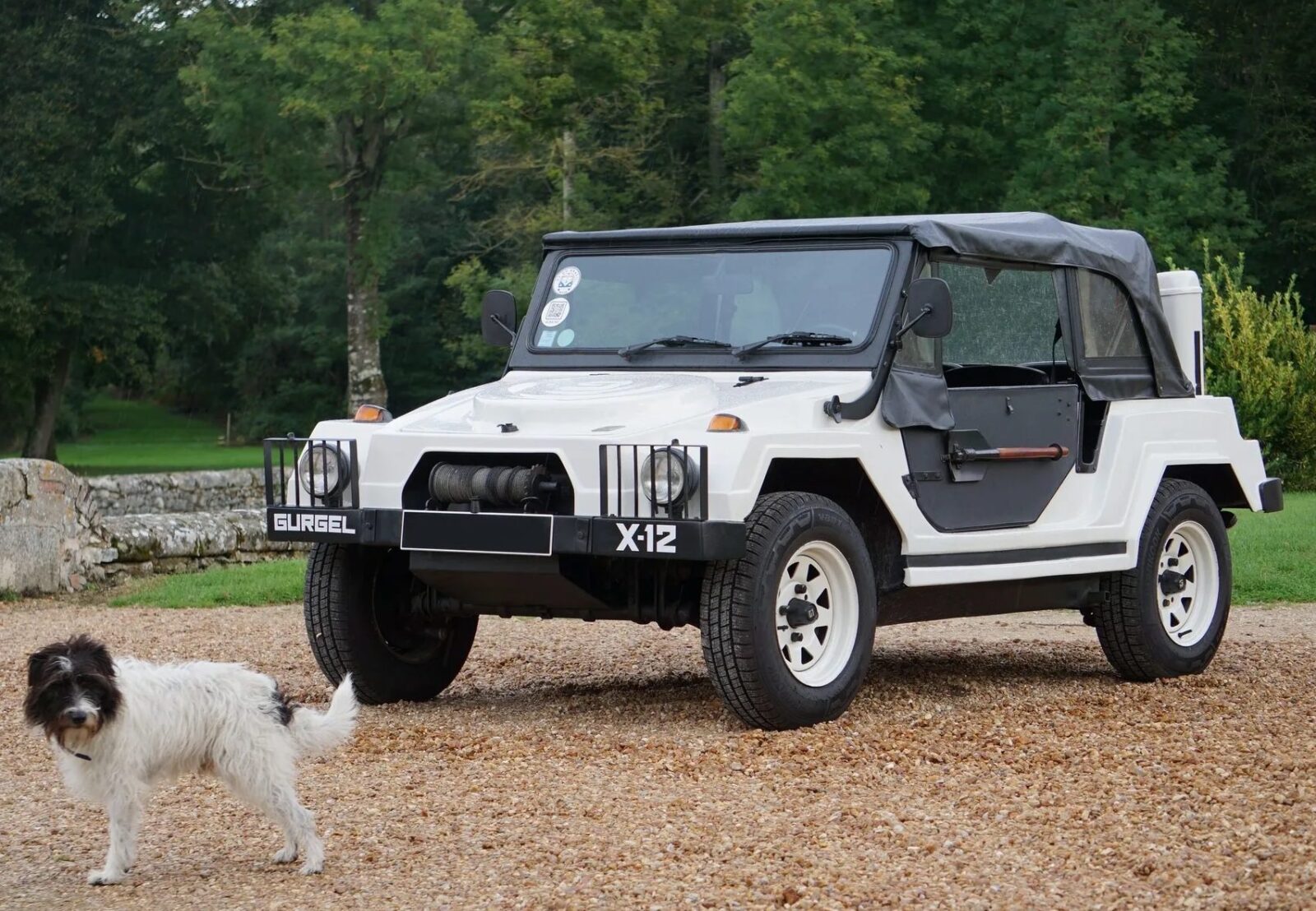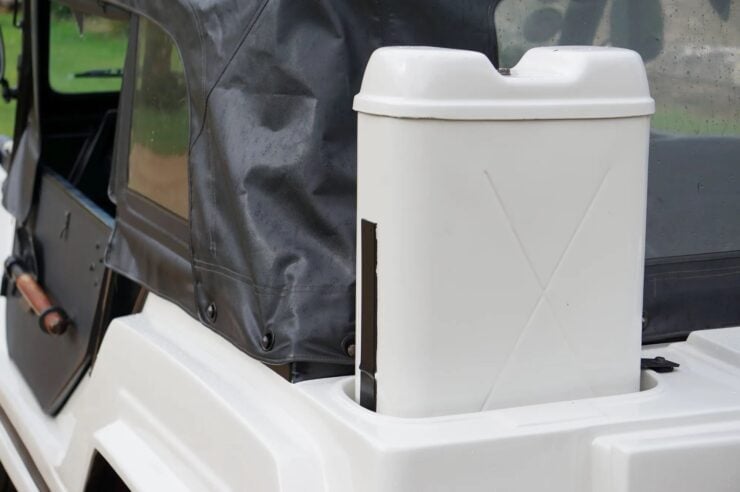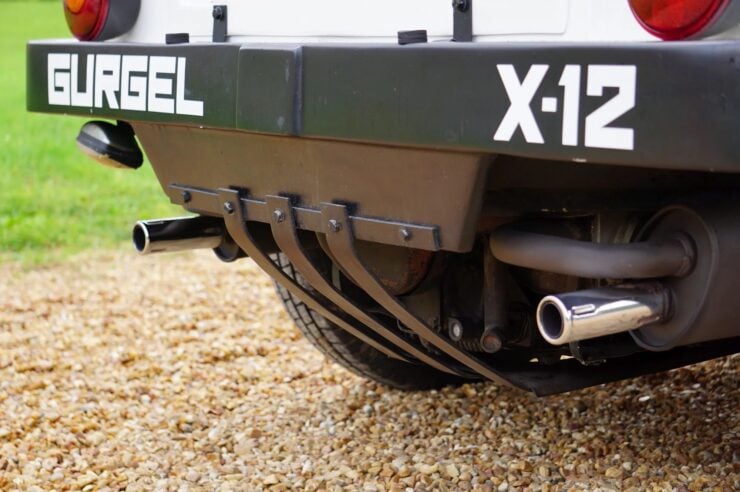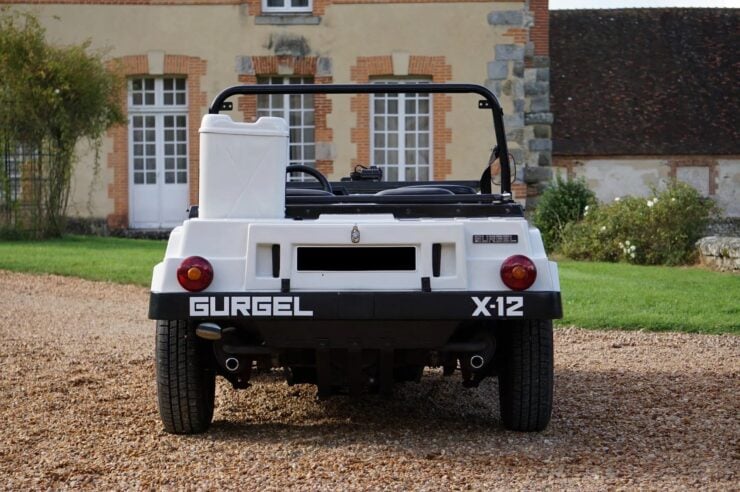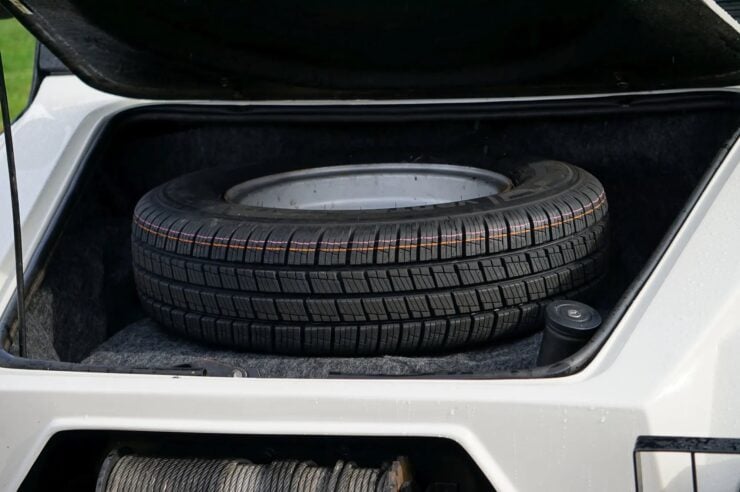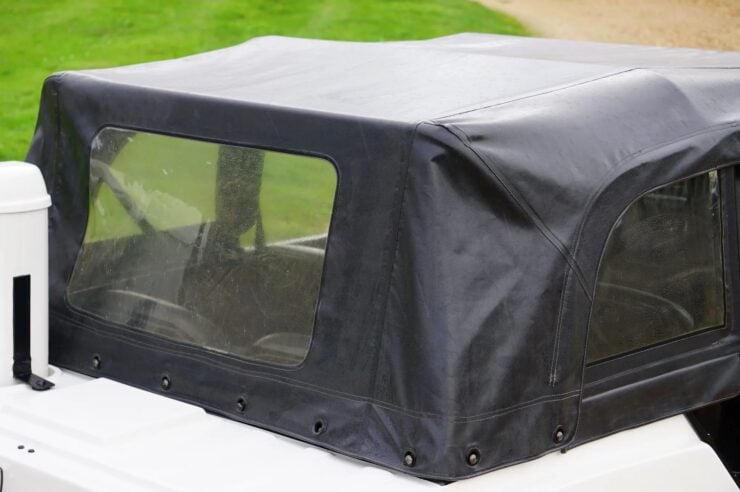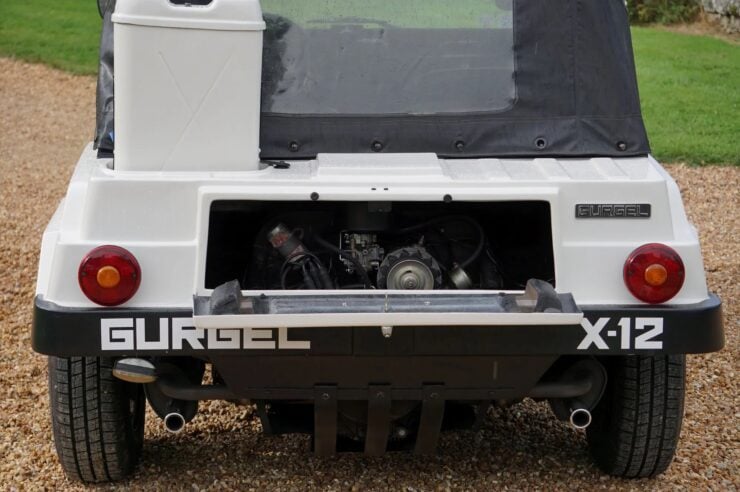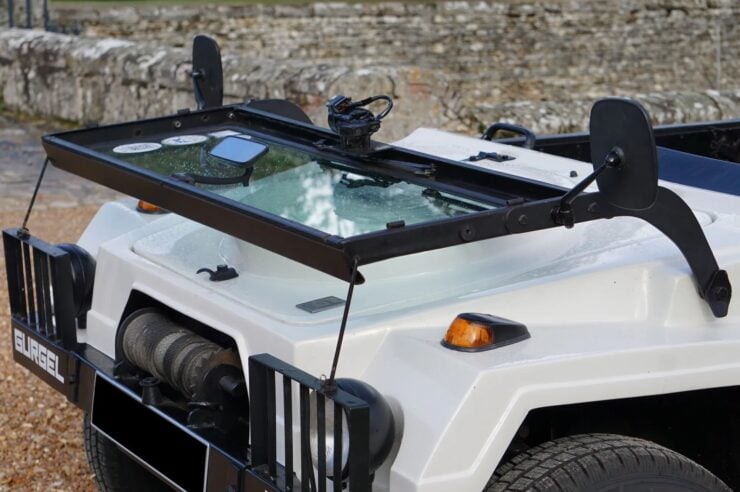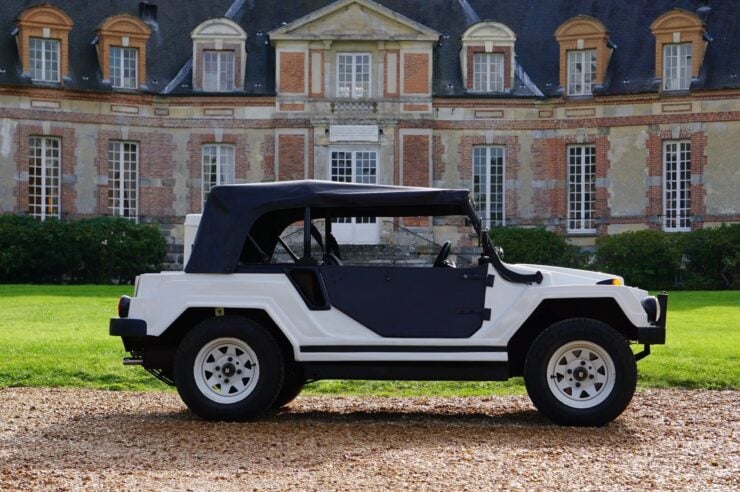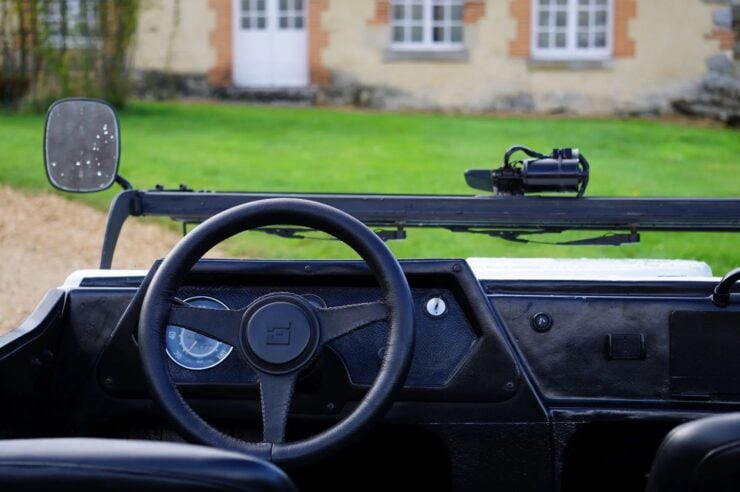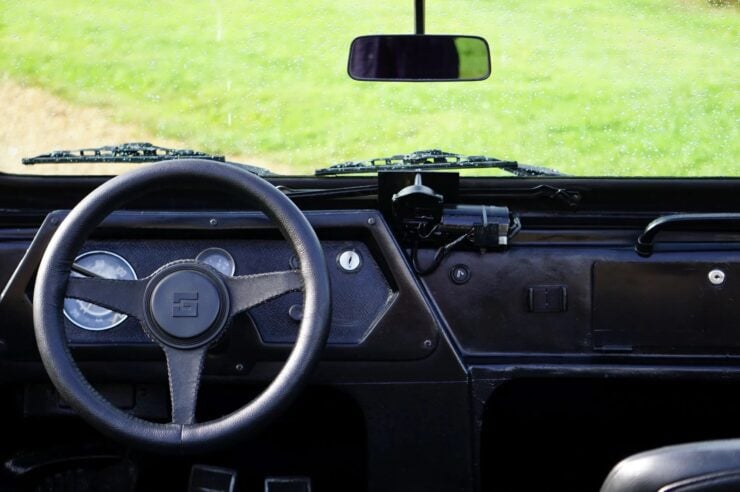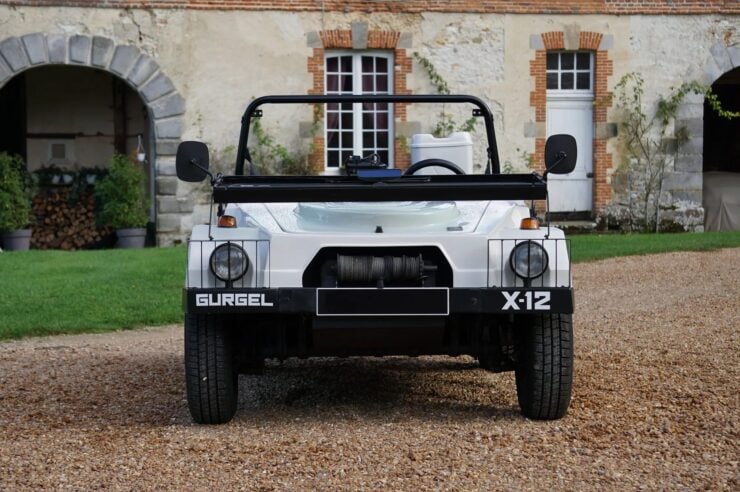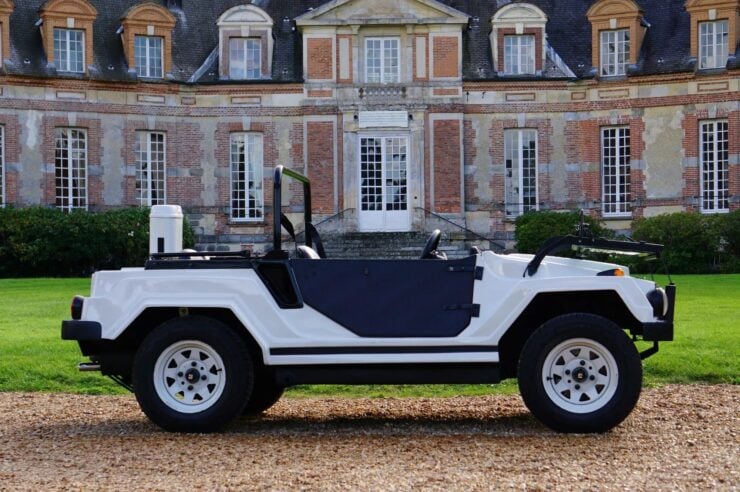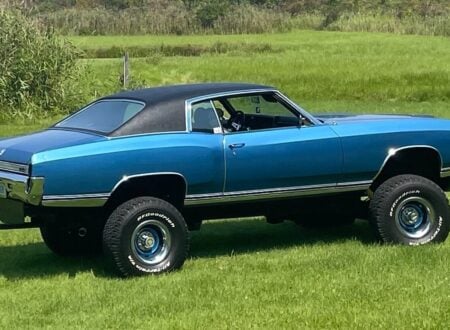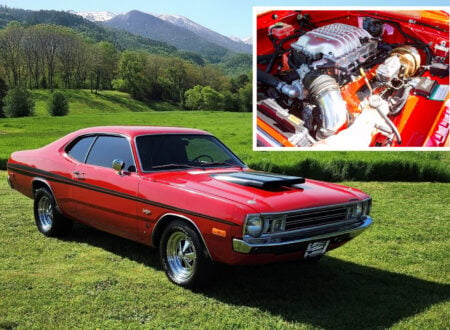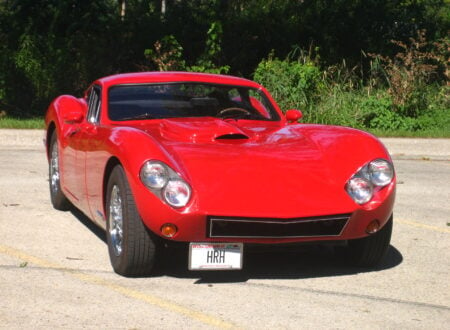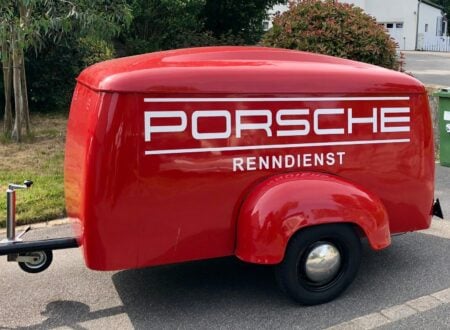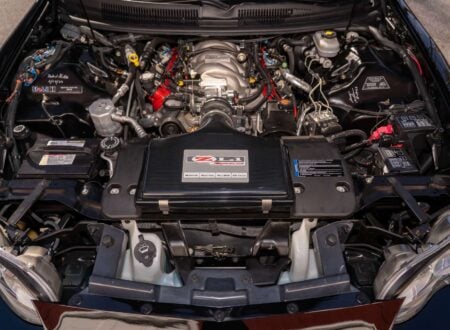This is a Gurgel Xavante X-12, it’s a vehicle you may never have seen before due to the fact that almost all of them were sold in South America, and relatively few were exported.
The Xavante X-12 was developed by Brazilian engineer João do Amaral Gurgel, a man who was described in his home country as “Brazil’s answer to Henry Ford.” Gurgel enjoyed an almost mythical celebrity status in Brazil thanks to the success of his company, and his cars are among the most beloved locally-produced vehicles ever made.
Fast Facts – The Gurgel Xavante X-12
- The Gurgel Xavante X-12, designed by Brazilian engineer João do Amaral Gurgel, was developed primarily for the South American market. It became one of the most beloved locally-produced vehicles in Brazil, known for its off-road capabilities, affordability, and ease of repair.
- João do Amaral Gurgel, compared to a Brazilian Henry Ford, founded Gurgel Motores in 1969. He was an innovator in Brazil’s automotive industry, creating biofuel and electric cars in the 1970s. His company eventually employed over 1,000 people and produced many thousands of vehicles.
- The Gurgel Xavante X-12 used Volkswagen Beetle components, including its rear-mounted 1.6-liter engine and four-speed manual transmission. It was primarily built from Gurgel’s patented Plasteel material for corrosion resistance, and it has a unique double rear handbrake system for improved off-road traction.
- The Xavante X-12 remains a popular vehicle in rural Brazil due to its durability and simple design. The 1978 model showcased here, featuring a recent mechanical overhaul and equipped with off-road accessories, is set to be auctioned in Paris with a starting price of €20,000.
The Great João do Amaral Gurgel
João do Amaral Gurgel, full name João Augusto Conrado do Amaral Gurgel, was born in 1926 in São Paulo, Brazil. As a young boy he always showed a great love of cars and a mechanical aptitude beyond his years. When he was studying engineering in college he was once assigned a crane project, but instead developed a unique concept for a small two-cylinder automobile named the “Tião.”
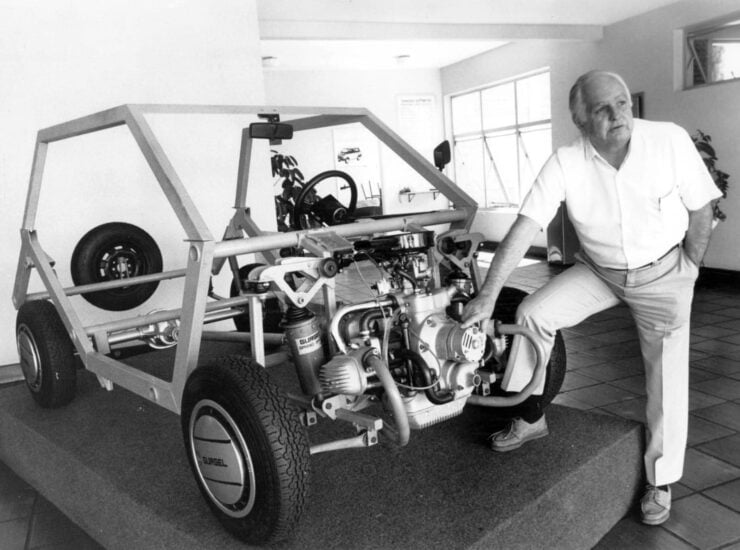 Here we see João do Amaral Gurgel with one of his unusual creations, a front-wheel drive car powered by a Citroen 2CV flat-twin engine. Image courtesy of Gurgel Motores.
Here we see João do Amaral Gurgel with one of his unusual creations, a front-wheel drive car powered by a Citroen 2CV flat-twin engine. Image courtesy of Gurgel Motores.After college Gurgel would move to the United States for a time, where he worked for General Motors and learned all he could about the automotive industry – both from the engineering side and the business operations side.
After moving back to Brazil he founded Moplast Moldagem de Plásticos in 1958, a company that used fiberglass and plastics to make signs. Fiberglass was the true wonder material of the age, comparable to carbon fiber today, though it was far easier to work with. It was already being used in automobile applications at this time, most famously for the body of the Chevrolet Corvette.
With his company enjoying strong growth and revenue, Gurgel started Macan Indústria e Comércio Ltda in 1964, this was primarily a VW dealership, though he also developed a line of go karts, minicars, and a simple industrial transporter called the Mocar.
The popularity of VW Beetle-based kit cars in the USA, particularly creations like the Meyers Manx, had caught Gurgel’s attention and as a VW dealer and engineer, he was perfectly positioned to create his own car on the Beetle platform. So that’s what he did.
In 1969 he founded Gurgel Motores (Gurgel Motors) and released his first production car, the Gurgel Ipanema. This was a fiberglass-bodied buggy very similar to the beach buggies of California. João Gurgel would be a key innovator in the Brazilian automotive world, creating biofuel-powered cars back in the 1970s, long before it became fashionable, and developing and selling his own electric cars.
A series of other petrol-powered models would follow, and the size of Gurgel Motores would continue to climb – eventually employing over 1,000 people by 1989 and building many thousands of Gurgel-branded vehicles in Brazil.
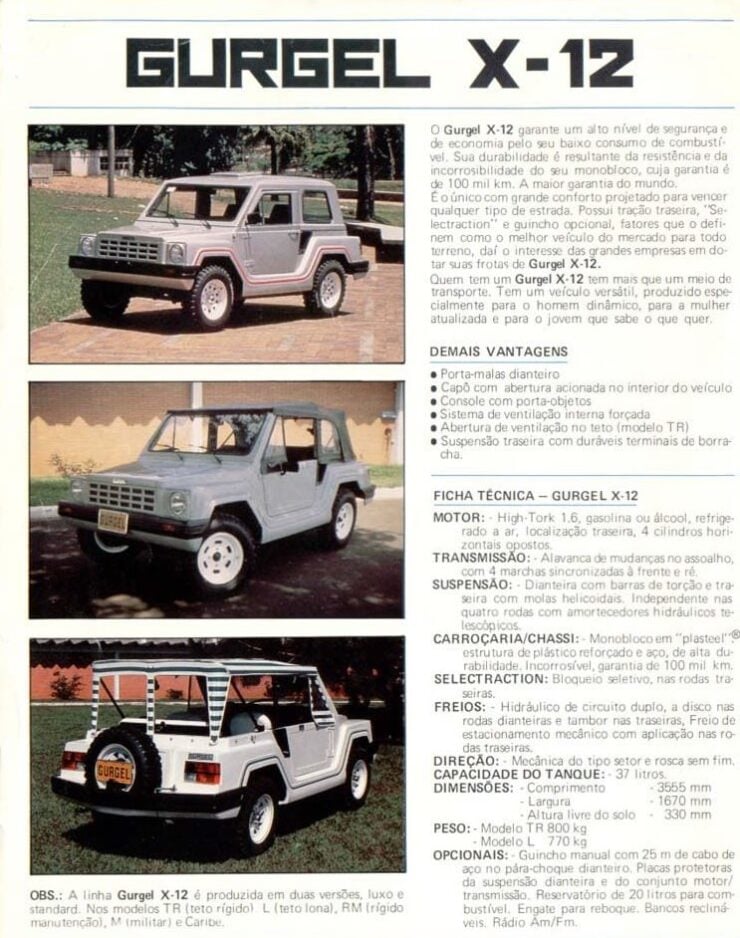 This is a page from an original brochure for the Gurgel Xavante X-12, showing some of the options and the possible specifications. Image courtesy of Gurgel Motores.
This is a page from an original brochure for the Gurgel Xavante X-12, showing some of the options and the possible specifications. Image courtesy of Gurgel Motores.The Gurgel Xavante X-12
The Gurgel Xavante X-12 was developed in cooperation with Volkswagen do Brasil, thanks in no small part to João Gurgel’s close connections with the automaker. The X-12, and very similar X-10 model, were developed to be tough, affordable, and easy to repair, as well as far more off-road capable than the Beetle.
The chassis and body was made from a unique material named Plasteel, this was a patented invention by Gurgel that essentially wrapped steel sections in fiberglass, creating strong and highly corrosion-resistant body panels.
The suspension, drivetrain, brakes, and steering were all sourced from the VW Beetle, and it used the same rear-mounted engine and rear-wheel drive layout.
The Gurgel Xavante X-12 offered better ground clearance than the Beetle as well as a much lower curb weight which helped off-road – weighing in at 850 kgs or 1,874 lbs as opposed to the weight of the Beetle at closer to 930 kgs or 2,050 lbs.
In order to improve off-road ability the X-12 (and X-10) were given an unusual double rear handbrake system named “Selectraction” that allowed the driver to manually lock a rear wheel on loose terrain.
This would then ensure that all the available engine power would be sent to the non-locked wheel – useful when a wheel lost traction on loose terrain and acting as a sort of early manual version of modern traction control.
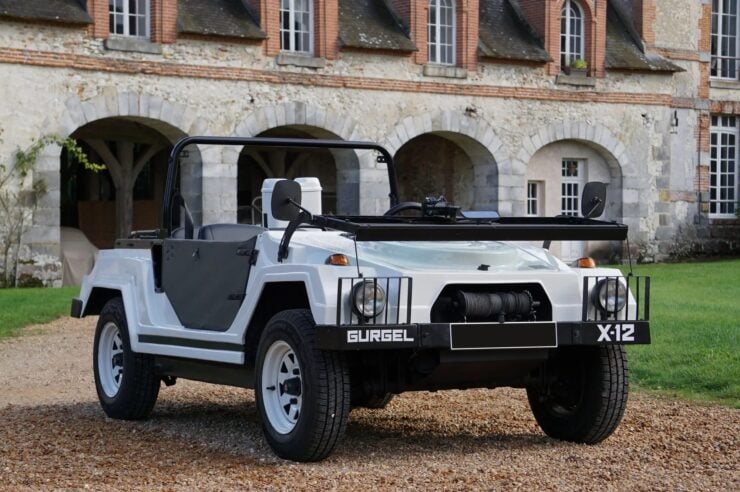 The Gurgel Xavante X-12 is a surprisingly capable vehicle both on road and off, with a low curb weight a better ground clearance than the Beetle it takes its drivetrain from.
The Gurgel Xavante X-12 is a surprisingly capable vehicle both on road and off, with a low curb weight a better ground clearance than the Beetle it takes its drivetrain from.The X-12 was powered by the 1.6 liter version of the Beetle air-cooled flat-four, and mated to the same 4-speed manual transmission. The car could be ordered in a variety of colors and with a removable hard top or a folding soft top. In many respects it was the locally developed answer to the Jeep, and it sold incredibly well – becoming the best-selling model that Gurgel would ever develop.
In Brazil the Gurgel Xavante X-12 is still a common sight on the roads, particularly in more rural areas, a significant testament to the longevity of the Plasteel body and chassis.
The cars are relatively unknown outside of their native Brazil, but when they are exported they always seem to draw a crowd of curious onlookers at shows and even just when stopping for gas.
The 1978 Gurgel Xavante X-12 Shown Here
The vehicle you see here is a Gurgel Xavante X-12 from 1978, it’s finished in white and comes with a black roll bar, black headlight protectors, black bumpers front and rear, and white steel wheels fitted with all-terrain tires.
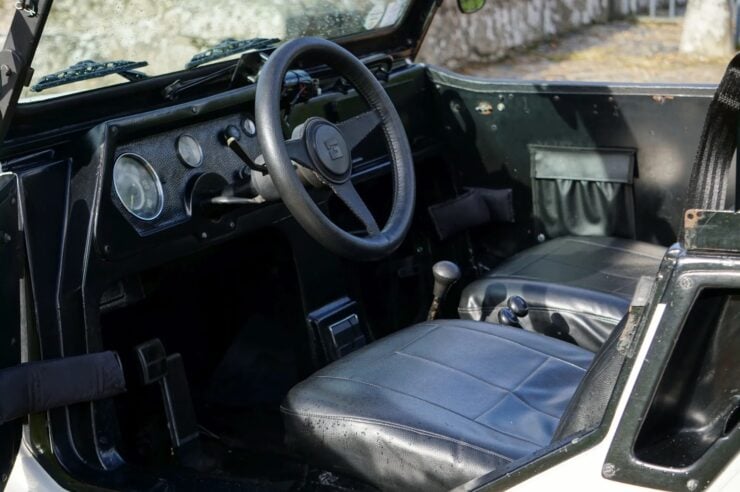 The interior is much better fitted out than many comparable vehicles, and in this shot you can see the two little knobs between the seats that are used for operating the dual rear handbrakes.
The interior is much better fitted out than many comparable vehicles, and in this shot you can see the two little knobs between the seats that are used for operating the dual rear handbrakes.This Gurgel benefits from a recent overhaul of the braking, steering, and electrical systems. The chassis and underpinnings are said to be very sound, and it’s equipped with front and rear bash plates, a winch, a sand removal shovel fixed to the driver’s door, and a 20 liter jerry can holder.
The car is now due to roll across the auction block with Artcurial in Paris on the 27th of October with a price guide starting at 20,000 or approximately $21,800 USD. If you’d like to read more about it or register to bid you can visit the listing here.
Images courtesy of Artcurial

